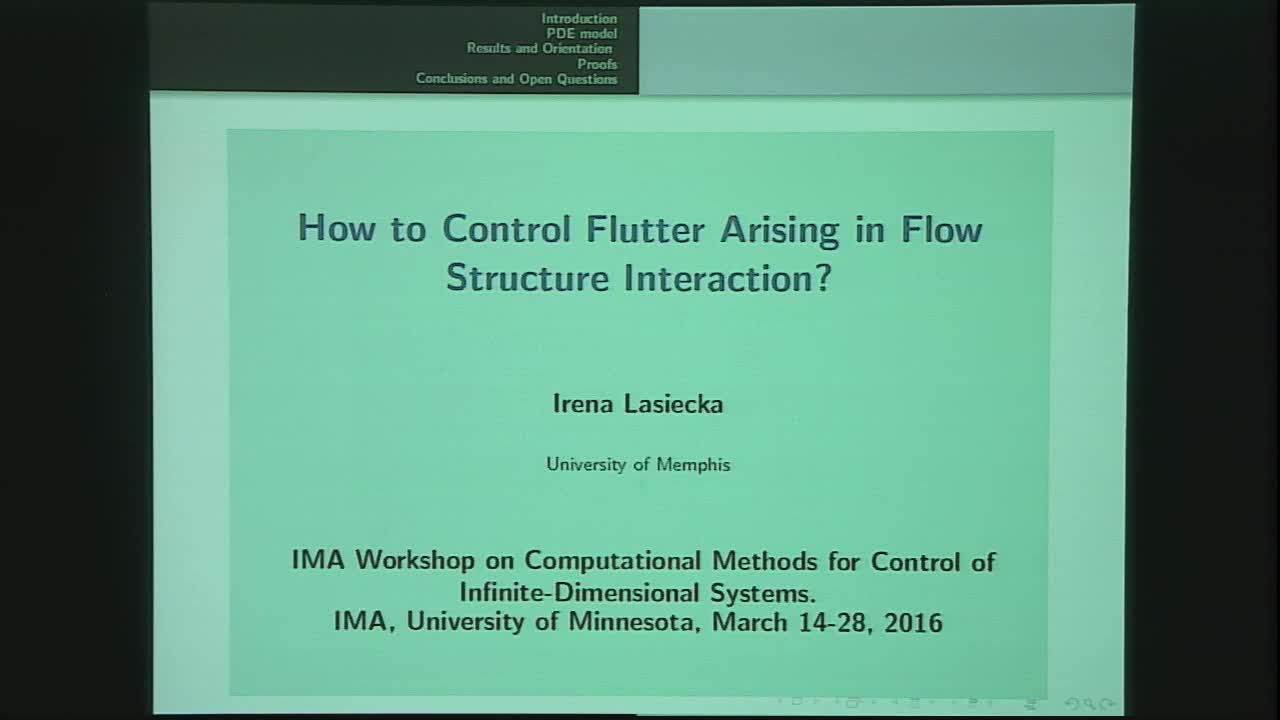How to Control Flutter Arising in Flow-structure Interactions
Presenter
March 17, 2016
Keywords:
- flow-structure, nonlinear PDE, flutter, oscillations, control of long time behavior
MSC:
- 34C15
Abstract
An appearance of flutter in oscillating structures is an endemic phenomenon. Most common causes are vibrations induced by the moving flow of a gas (air, liquid) which is interacting with a nonlinear structure. Typical examples include: turbulent jets, vibrating bridges, oscillating facial palate in the onset of apnea. The intensity of the flutter depends heavily on the speed of the flow (subsonic, transonic or supersonic regimes). Thus, reduction or attenuation of flutter is one of the key problems in aeroelasticity with application to a variety of fields including aerospace engineering, structural engineering, medicine and life sciences.
Mathematical models describing this phenomenon involve coupled systems of nonlinear partial differential equations (Euler Equation and nonlinear plate equation) with interaction at the interface - which is the boundary surface of the structure.
The aim of this talk is to present a mathematical theory describing:
(1) asymptotic stability and associated long time behavior in both subsonic and supersonic regimes.
(2) feedback control strategies aiming at the elimination, attenuation or control of the flutter .
We shall show that at the subsonic speeds feedback control applied to the structure eliminates asymptotically the flutter. In the supersonic regime the dynamics converges asymptotically to a finite dimensional system which can be controlled by finitely many actuators.
